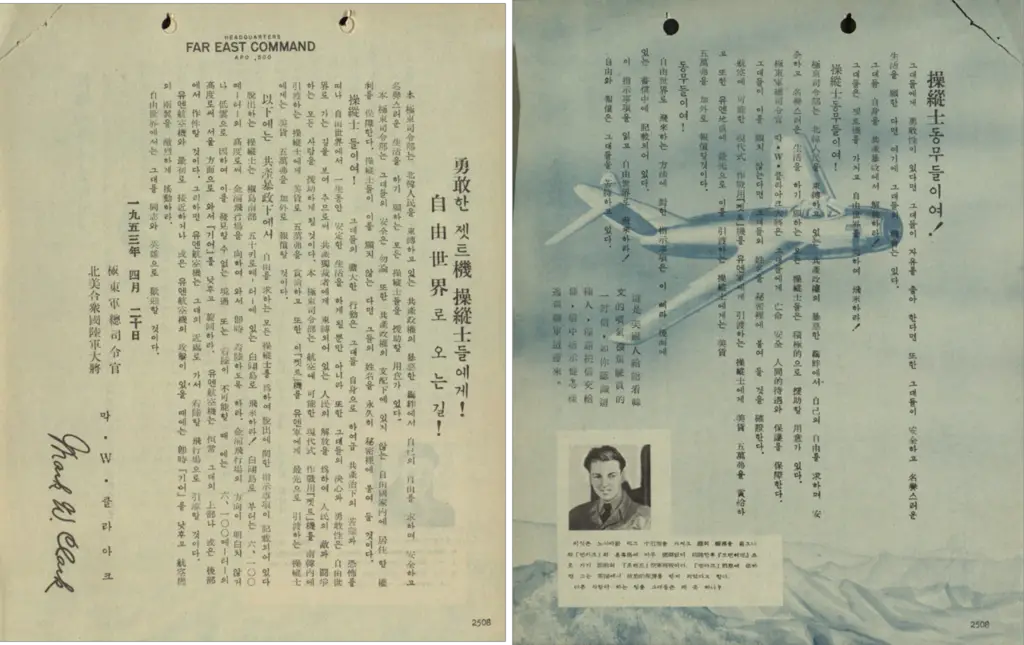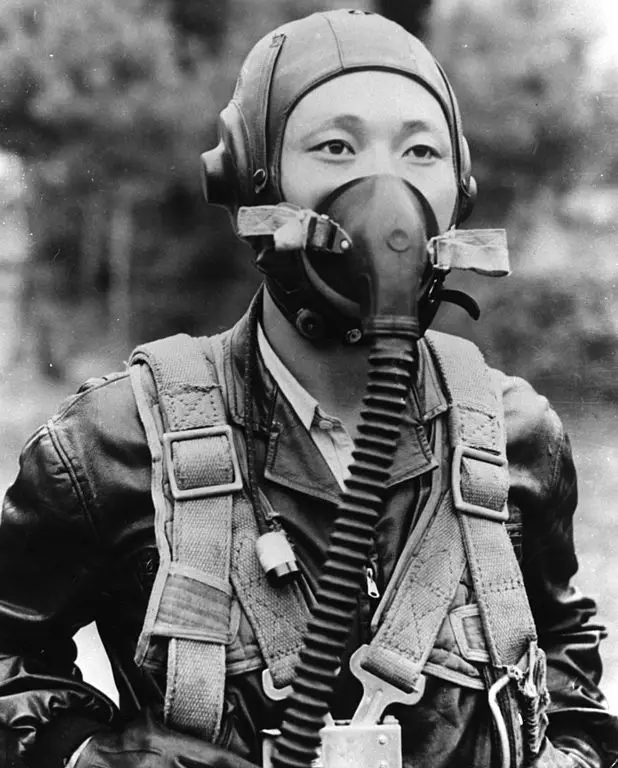The Soviet-made MiG-15 aircraft made its first appearance in the 1950s shortly after the Korean War had begun. The USSR began supplying the aircraft to North Korea and China since the United States was known to have greater technical superiority and a greater number of aircraft in the sky.
The introduction of the MiG-15 was felt immediately by the U.S. and British aircraft as the Soviet aircraft began to shoot down an increasing number of Allied aircraft. At one point, U.S. military commanders even halted missions that went over enemy territory.
There were no American or British aircraft that could match the MiG-15 at the time, not even the newest airplane of the U.S. Air Force, the F-86 Sabre. Commanders needed to discover what made the enemy aircraft so deadly. To find that out, they needed to get their hands on a fully functioning MiG-15.
In 1952, the U.S. Army’s top-secret psychological warfare division took on the task of finding a way to get a MiG-15. The plan they came up with involved giving $50,000 in cash to any North Korean, Chinese, or Soviet pilot who defected and handed over a fully intact MiG-15. In addition to the cash, the defector would also receive political asylum and citizenship in any western democracy they wanted. They also came up with another added bonus. Any pilot that was the first to deliver a MiG-15 would receive $100,000. The plan became known as “Operation Moolah.”
In 1953, the U.S. military began their propaganda campaign. Radio broadcasts were made from Japan and leaflets were dropped on North Korean and Chinese bases that told of the cash prize for delivery of the jet. In just the span of one month, a million leaflets had been dropped, but by the time the Korean War ended on July 27, 1953, no Soviet, North Korean, or Chinese pilot had taken up the Americans on their offer.

The operation apparently had not worked, but something else had happened after the beginning of the campaign. It was noticed that MiG-15 activity had decreased after the propaganda campaign had begun, and when Allied forces did encounter MiG-15s, they were now able to shoot them down more easily. It was believed that experienced Russian pilots that had been flying many of the MiG-15s were no longer behind the controls, possibly because the Soviets feared the loss of one of their pilots and one of their aircraft to U.S. control.
But something eventful finally happened on September 21, 1953, almost two months after the Korean War armistice. A lone 21-year-old North Korean pilot named No Kum Sok boarded a MiG-15 at an airbase near Pyongyang and began a long flight to his intended destination; the American’s Kimpo Air Base in South Korea.
No landed at the airbase almost without anyone noticing. The radar at Kimpo had been shut down for maintenance earlier in the day, and other pilots flying in the area hadn’t recognized the enemy aircraft. No made his landing and was immediately taken into the headquarters of the airbase and checked out by a medical officer. He wasn’t questioned right away because there were no translators present on the base at the time.
The North Korean pilot was soon flown to another base near Seoul where he waited to be interrogated. This was when he was informed of the $100,000 prize for delivering an intact MiG-15 into the hands of the American military that had been the goal of Operation Moolah. The thing was, No didn’t know anything about the prize and hadn’t even heard of it. He simply wanted out of North Korea, and the MiG had been his way out. Everyone continued to believe that No was there because of Operation Moolah until he was finally questioned by translators. Even then, they still didn’t quite believe him.
No believed that Operation Moolah didn’t work and never would have. For one, he believed that the communist pilots targeted by the operation didn’t have any understanding of the value of $100,000. Second, he believed that the leaflets had been dropped in the wrong area, and even if they had been read, pilots would have thought it as an American trick to lure them in to shoot them down. Third, pilots were strictly forbidden to listen to South Korean and Japanese radio broadcasts.
Even with No’s insistence that he had only flown to South Korea for his freedom, he still became a poster boy for the prize from Operation Moolah. President Eisenhower, on the other hand, was not thrilled with Operation Moolah and the potential payout to the defector. He had ethical concerns over the deal as well as how it might affect the armistice. His advisors, however, recommended that the deal be fully executed. A bit of political wrangling ensued, and an alternate plan was developed. The administration was going to try to get No to say “no” to the $100,000.
While all this political back and forth was going on, No and his now dismantled MiG-15 were flown by a cargo plane in secret to the American base on Okinawa, Japan. No then began to assist two test pilots while in Okinawa so the U.S. military could understand what made the MiG tick. One of the pilots was Captain Tom Collins, a test pilot who had set a world speed record in the Sabre, one of the U.S. aircraft that had gone up against the Mig-15 in Korea, and the other pilot was Chuck Yeager, the man who first broke the sound barrier. At the time, No had been made a government employee making $300 a month, a huge amount in his eyes.
No continued to be interrogated into November 1953 as he helped Collins and Yeager with their test of the MiG-15. He was then instructed that he would be doing a press conference where he would turn down the $100,000 reward. It was the path the administration wanted, especially Eisenhower, since they were concerned with the amount of the payout and that No would somehow spend the money on unscrupulous things.
There was a political tightrope to be walked, however. It would look bad if the U.S. reneged on the deal. Defense Secretary Charles Wilson and Secretary of State John Dulles came up with an alternate plan to pay No the amount, but it would be in a trust. They figured this would satisfy what Eisenhower wanted and would satisfy the press and their interest in the payout to the defector.
On November 28, 1953, it was reported to the press that No had been paid for his delivery of the Mig-15 under Operation Moolah. A photo-op was even done that showed No depositing his new check in a bank in Okinawa. The problem was the check was fake. No’s account was still at zero, and he was never told the event had been a ruse.
No continued to live in Okinawa until May 4, 1954 when he finally got what he wanted and arrived in the United States at San Francisco. The CIA even enrolled No to the University of Delaware for the next fall. It was reported that No planned to use his money to study political science, help his mother who was in South Korea, and help South Korea rebuild. It was also reported that No planned to move back to South Korea. But No didn’t actually say these things or have any of these intentions. His official translator said them for him as they were part of the public relations plan of the Eisenhower Administration.
No was finally taken to Riggs National Bank in Washington D.C. to receive his long-awaited reward that had been promised him, but No found the meeting unsettling and left the bank after he felt he was being cheated. It was explained that his $100,000 would be put in a trust fund tax-free where he would receive a $5,000 one-time payment and a $250 monthly stipend. This would be renewed every five years. The problem was, No had no idea what a trust fund was. The government felt if he had had access to the full amount, he would have spent it unwisely.
The former North Korean pilot had few options, however, and eventually returned to the bank and agreed to sign after being convinced he was not being tricked. No started at the University of Delaware in the fall of 1954 and was instructed by his CIA handlers to tell the press he had received his money and all was well. This was what the major media outlets reported.
No became a U.S. citizen and graduated with degrees in mechanical and electrical engineering from the University of Delaware. He worked for a number of aerospace companies and later became an aeronautical engineering professor at Embry-Riddle Aeronautical University.
The MiG-15 that No had flown was taken from Okinawa to Wright-Patterson Air Force Base in Ohio after Yeager and Collins finished their testing. In No’s autobiography, he said they discovered what he already knew from flying the MiG in combat, that the MiG-15 was inferior to the F-86 Sabre. No’s MiG-15 is currently in the collection of the National Museum of the United States Air Force.
Sources: Politico, The Great Leader and the Fighter Pilot, A MiG-15 to Freedom, Air Force National Museum, Psywarrior, Military History Now




